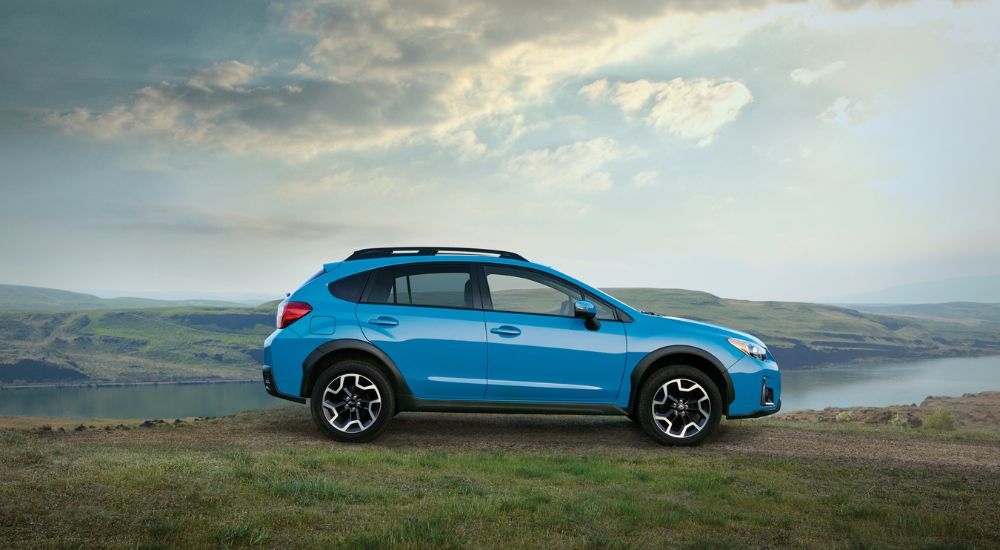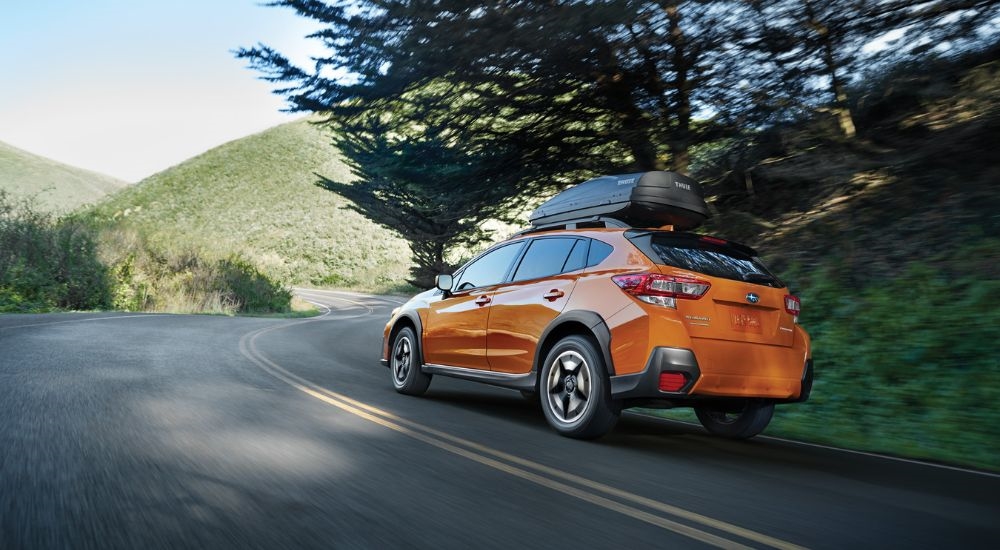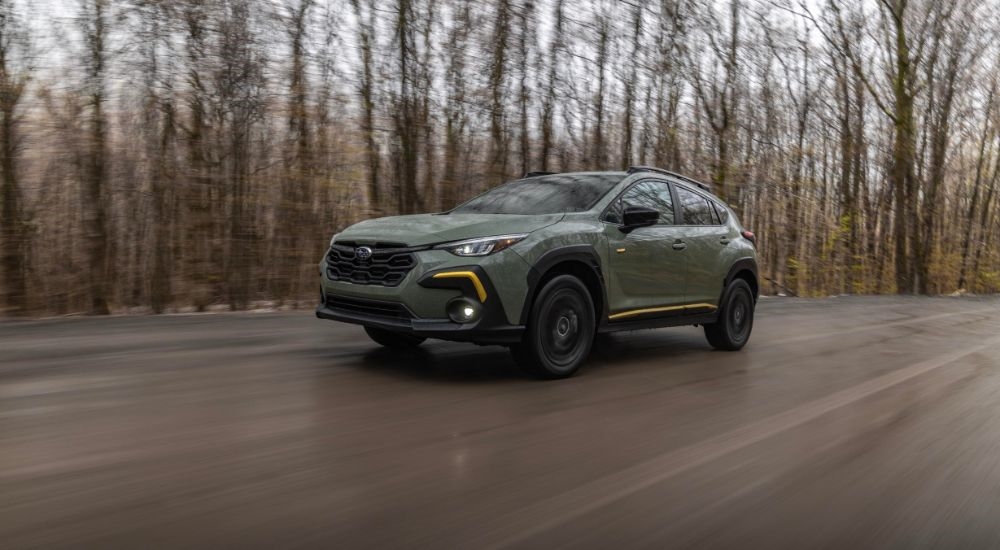The New Classic: How the Crosstrek Became So Cool

When folks think of a Subaru, they tend to think of the Outback, the Legacy, or the WRX, depending on what kind of driver they are. But in 2013, a smaller, more agile (but just as fun on- and off-road) all-wheel-drive vehicle joined the Subaru lineup. Today, the Subaru Crosstrek is one of the most sought-after vehicles at our used Subaru dealership near Poughkeepsie as well as around the country.
Compared to other SUVs in its class, the Crosstrek has seen more of a slow climb to the top. While it was an overnight hit with some drivers, it has taken a full eleven years for others to fully appreciate the versatility, practicality, and overall fun delivered by the Crosstrek. However, by 2022, more and more drivers were starting to appreciate what this compact off-roader could do.
Let's take a look at how the Crosstrek has evolved to become Subaru’s little engine that could.
How the Crosstrek Came to Be
The Crosstrek traces its design and engineering to two major ancestors: the Impreza and the Outback, both released in the early 1990s. The Outback name actually started as a trim package for the five-door hatchback Impreza, which was offered in both front- and all-wheel drive versions but quickly became its own best-selling model.
In 2011, Subaru considered a concept that lifted the suspension of the Impreza, kept the hatchback body type, and exclusively offered Subaru’s Symmetrical All-Wheel Drive system. Personality-wise, what became the 2013 XV Crosstrek would echo a lot of what the Outback offered, only on a slightly smaller scale. For drivers who wanted to explore both New York State and New York City, its small size and hatchback style made it the ultimate urban SUV.
For drivers, that meant a small all-weather vehicle with a smaller price tag and a surprisingly economical use of fuel. Factor in Subaru's reputation for vehicles that enjoy a long life with few problems and the XV Crosstrek was born as an ideal option for drivers who wanted a reliable SUV with the smallest possible footprint—physically and financially speaking.
In fact, Subaru was so certain of the XV Crosstrek’s winning combination of usefulness and practicality that a hybrid version was announced for the 2014 model year. Unfortunately, Subaru announced just two years later that they were going to discontinue the hybrid version because they were going in another direction. They also dropped the “XV” from the Crosstrek’s title in the US market.
That new direction was the 2019 Crosstrek Hybrid, which was the first plug-in hybrid vehicle offered by Subaru. Production of electric and hybrid vehicles from Subaru seems to have slowed after the 2023 model year, however, with limited updates on Subaru’s plans for future vehicles as well. Only time will tell if a new Crosstrek Hybrid will emerge as the ultimate environmentally friendly, economical vehicle for casual off-roaders.

The Crosstrek’s Early Years
Compared to vehicles like the Impreza, which have been produced for over three decades, the Crosstrek is still technically in its early years. On top of that, many Subaru vehicles have a lifespan of over 200,000 miles, which means the Crosstrek is basically still a baby in car years!
The 2013 XV Crosstrek was advertised as the “most fuel-efficient AWD Crossover in America,” and it delivered, offering 25 MPG on city streets and 33 MPG on the highway for a combined 28 MPG. In fact, these numbers are still accurate today, depending on the exact model selected.
The early XV Crosstrek was equipped with Subaru’s 2.0L Boxer engine, which offered a zesty 148 hp. When paired with standard Symmetrical all-wheel drive, 8.7-inch ground clearance, and manual transmission, this engine made sure this 175-inch-long vehicle was tall, small, and nimble.
Originally offered in just two trims—Premium and Limited—the XV Crosstrek included standard Bluetooth connectivity, heated front seats and side mirrors, a USB port, and a rear-vision camera.
In 2015, the trims were re-assigned to 2.0i, 2.0i Premium, and 2.0i Limited, providing drivers with a more basic model and allowing more options on the higher trims. Most notably, Subaru’s EyeSight system of driver assistance technology was made available for Premium and Limited drivers. Today, the EyeSight tech suite—which includes the radars, cameras, and sensors that power features like Pre-Collision Braking—is standard on all Crosstrek trims.
It wasn’t until the 2018 model year that Subaru gave the Crosstrek its full blessing to become an off-roader. This was the year that the Crosstrek was built with updated Subaru Global Platform architecture.
As a result, the Crosstrek became tougher, stronger, and better equipped for the challenges of off-roading. Subaru made X-Mode available to Crosstrek drivers, which allowed for greater traction on a greater variety of road conditions. Active Torque Vectoring also increased overall handling, and suddenly, the Crosstrek became the kind of vehicle that could handle Hudson Valley's weather all year round.
The Crosstrek of Today
2021 was a banner year for the Subaru Crosstrek, as this was the year the wildly popular Sport trim made its debut.
Joining the Base, Premium, and Limited trims, the Crosstrek Sport came equipped with a new 2.5L engine good for 182 hp and 176 lb-ft torque. Compared to the standard-offering 2.0L engine and its 152-hp engine, this was a huge step for Crosstrek drivers who needed just a little more pep in their step.
But the Sport trim wasn’t just highway-friendly. Equipped with a dual-function X-Mode selection and Hill Descent Control, the 2021 Crosstrek Sport was designed to handle snow, dirt, and mud. Given the number of significant squalls in 2021, Hudson Valley drivers may have appreciated these particular options almost immediately.
The 2024 model year begins a new generation of Subaru Crosstrek. Following its debut at the 2023 Chicago Auto Show, there has been a great deal of buzz about the all-new iteration.
One particular stand-out is the new Wilderness trim. With a higher 9.3-inch ground clearance, upgraded suspension, and specialized all-terrain tires, the Crosstrek Wilderness is truly designed for adventure. From its tent-ready rooftop with standard roof rails and anti-glare hood design to increased approach, departure, and ramp breakover angles, this model is prepared for long journeys to strange places.

Discover the Subaru Crosstrek
Regardless of whether your ideal summit is among the 14ers out west or at nearby Peach Hill Park, the Subaru Crosstrek can meet your needs. While trims like the Sport and Wilderness are specifically designed for extra duties beyond the pavement, drivers craving a little less adventure and a little more comfort can still find a lot to enjoy in the Crosstrek.
From its ability to drive well in all kinds of weather to appreciated extra features like heated seats and mirrors, the Crosstrek is just as capable of handling an adventure through the farms as it is a trip to Brace Mountain. And with its generous maximum cargo space of 54.7 cu.ft. (thanks to 60/40 split-fold rear seats), the Crosstrek has plenty of room for hiking, camping, or boating gear.
With its lengthy lifespan and reputation for reliability, the Subaru Crosstrek has become a serious contender in the compact SUV segment, with more and more drivers considering whether a new or used Crosstrek might be ideal for their driving needs.

